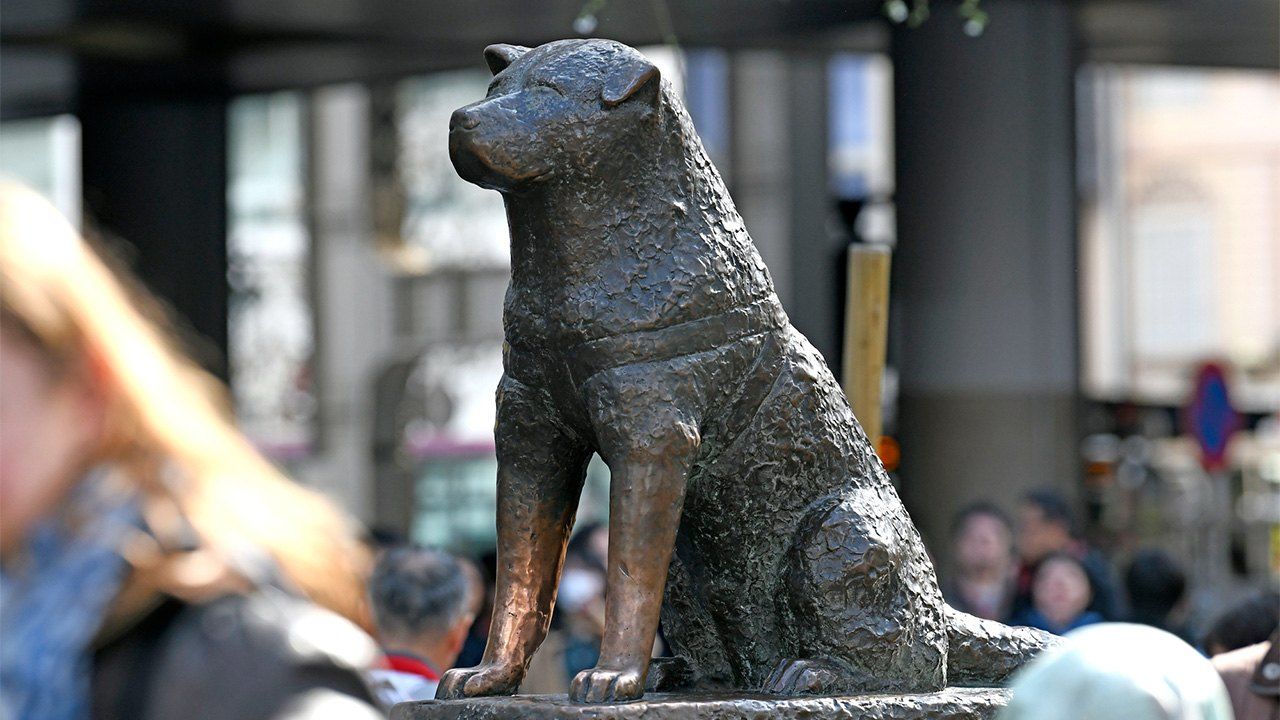
Hachikō, the Faithful Dog
History Society Travel- English
- 日本語
- 简体字
- 繁體字
- Français
- Español
- العربية
- Русский
From Akita to Tokyo
The story of Hachikō, the dog who waited outside Shibuya Station in Tokyo for his master to return even after he had died, tugs the heartstrings of people worldwide. A statue of the faithful hound outside the station is the most popular meeting spot in Japan, and attracts many tourists too. This year sees the hundredth anniversary of Hachikō’s birth.
Hachikō was born in Ōdate, Akita Prefecture, some 600 kilometers from Shibuya. He was one of an Akita-inu litter born in November 1923 to dogs belonging to a farmer named Saitō Yoshikazu.
Around the same time, Ueno Hidesaburō, a professor in the Department of Agriculture at Tokyo Imperial University (now the University of Tokyo), was looking for a purebred Japanese dog for himself. One of his students was working in Akita and acquired the dog from Saitō on Ueno’s behalf.
The Akita-inu is a breed designated as a “natural monument” by the Agency for Cultural Affairs. These dogs are large with a gentle composure and thick, fluffy coats. They are also considered loyal to their owner, attracting ardent fans worldwide. The breed is said to have originated in the 1630s through cross-breeding of Matagi hunting dogs with local dogs to raise animals that were good at fighting.
A Puppy Called Hachi
One snowy day in January 1924, the young puppy, some 50 days old, was wrapped in a rice bag to keep him warm for the 20-hour train journey to Ueno Station, Tokyo. Shortly after, he was sent to the home of Ueno Hidesaburō, near Shibuya Station.
The professor, who had no children, cherished the frail pup, allowing him to sleep under his bed and even eat with him. He named the dog Hachi because, when standing, his forelegs made the shape of the character 八, which means “eight” and is pronounced hachi. (Hachikō is an affectionate variant on the dog’s original name).
Hachi grew sturdy under the loving care of Ueno and his wife Yae. He began accompanying Ueno on his way to work, as far as Shibuya Station, and would wait there in the evening for his master to return.
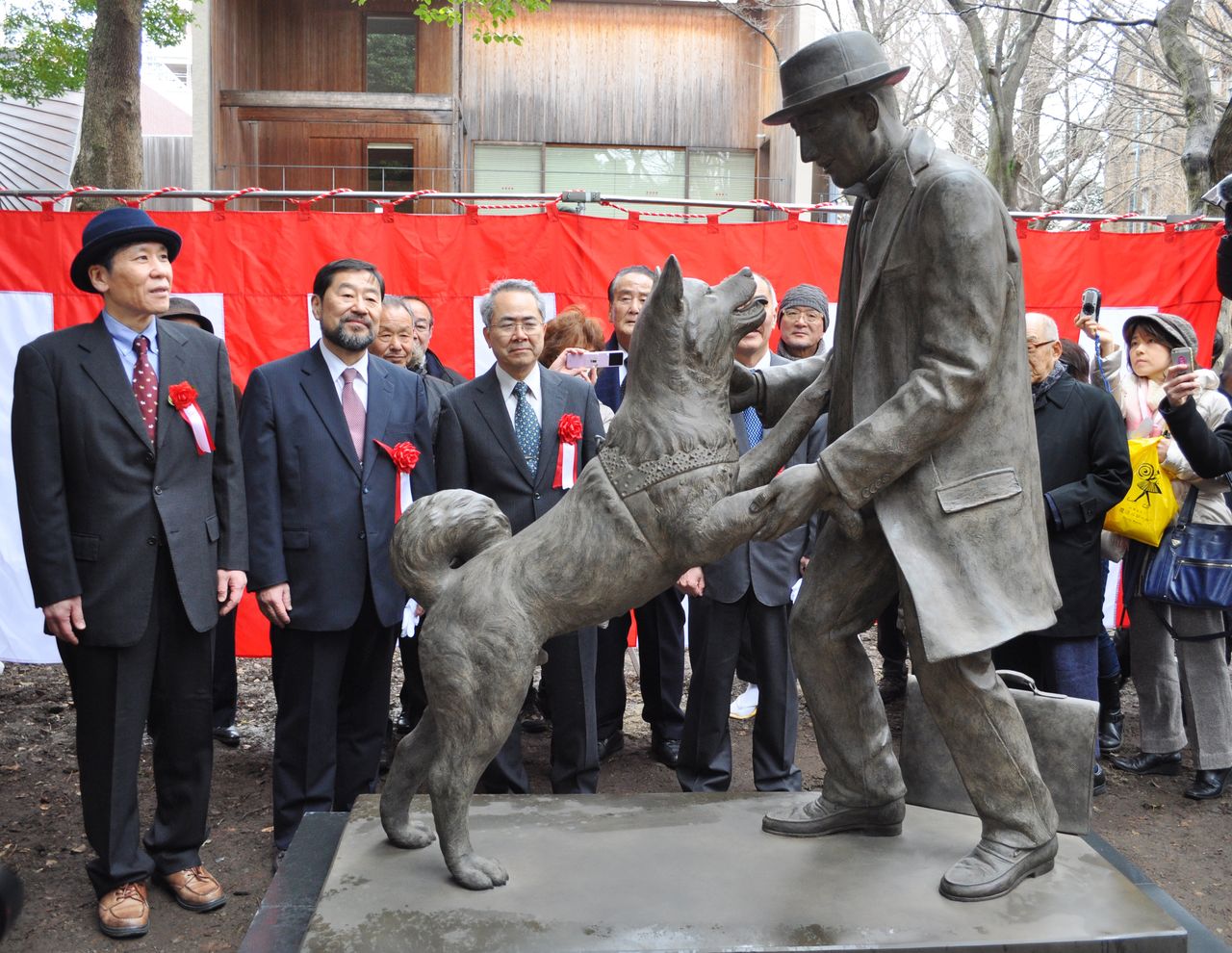
A statue depicting Hachikō greeting Professor Ueno, at the Faculty of Agriculture of the University of Tokyo, in Bunkyō. (© Jiji)
Sudden Separation
Then in 1925, just 16 months after Ueno took charge of Hachi, the two were suddenly separated. On May 21, Hachi accompanied Ueno to the station as usual, but shortly after a faculty meeting, the professor suffered a cerebral hemorrhage and abruptly died, aged 53.
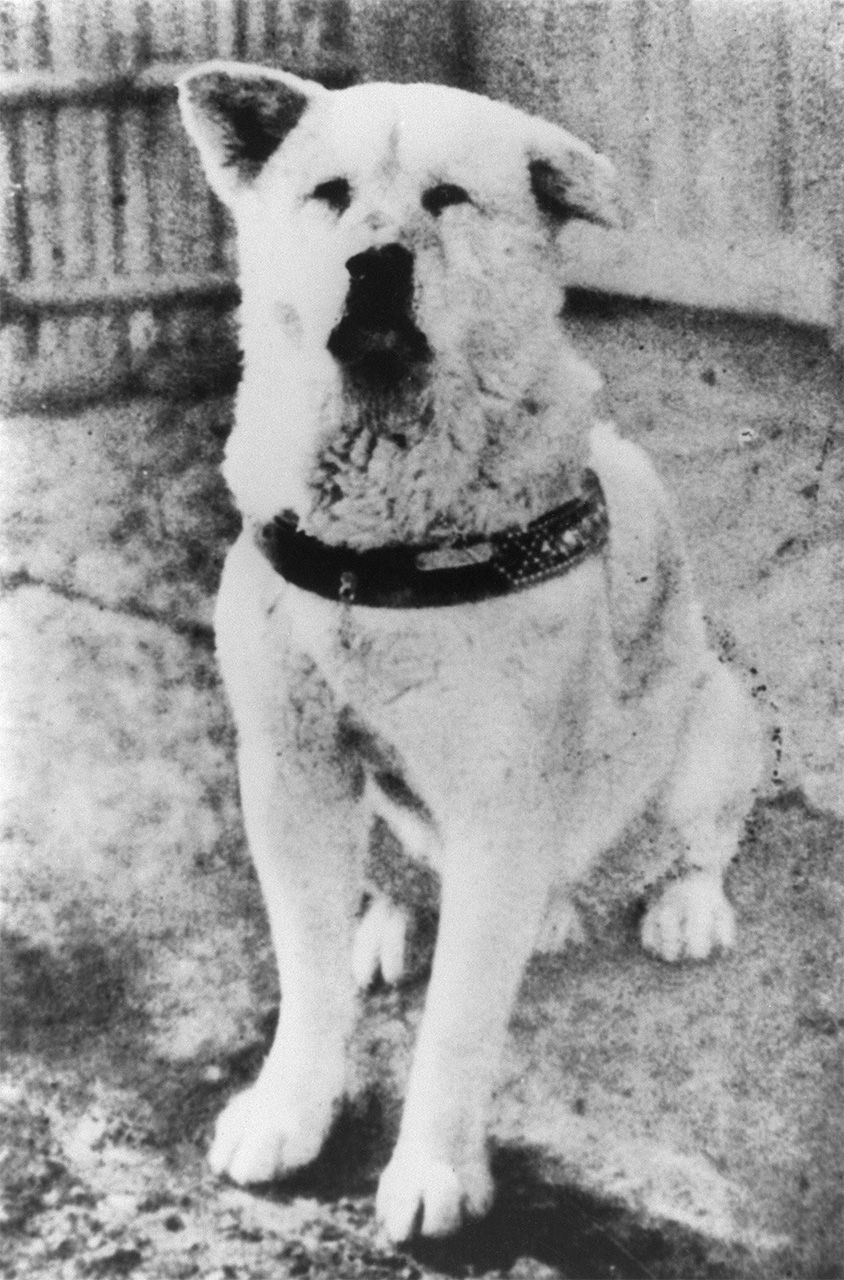
Hachi became famous for his loyalty. (© Jiji)
Hachi went to the station in the evening to greet the professor, returning home after he failed to appear. He huddled in the room with the clothing the professor had worn that day. Somehow sensing his master was in trouble, he grew sullen and refused food for three days.
As Yae was Ueno’s common-law wife, she could not inherit their Shibuya home and moved into smaller, rented accommodation. Hachi was taken in by an acquaintance of hers who ran a kimono store in Nihonbashi, Tokyo. After the move, Hachi sometimes tried to return to Shibuya Station, eight kilometers away.
He later lived with relations in Asakusa, then with Yae in Setagaya, but he never stopped trying to reach Shibuya. Ueno’s former gardener, Kobayashi Kikuzaburō, who lived close to Ueno’s former home in Shibuya, learned of Hachi’s plight and took custody of the dog.
Thereafter, Hachi returned to the station each morning and evening, where he would wait outside the ticket gates, rain, snow, or shine. It seemed he was forever hoping that his master would eventually return.
Wider Attention
Saitō Hirokichi, founder of the Japanese Dog Preservation Society, was deeply moved by Hachi’s loyalty. In 1932, he wrote an article for the forerunner of today’s Asahi Shimbun recounting the dog’s tale. Through his writing, people in Japan and abroad learned how Hachi had been faithfully awaiting his deceased master’s return for seven years.
People from far and wide expressed concern as Hachi grew old and weary, and the station staff also took care of him. His story was taken up by newspapers and radio shows, and as his fame grew, locals called for a statue in his honor.
In 1934, volunteers began collecting money for the cause, and a bronze statue of Hachi, 162 centimeters high, was built outside the Shibuya Station entrance atop a 180-centimeter pedestal. Hachi was even present at the statue’s unveiling, on April 21.
But in 1935, suffering an infection of parasitic worms, he weakened, dying on March 8, aged 13 (equivalent to 90 in human years), having waited for his master in vain for almost 10 years.
A funeral was held for Hachi on March 12 and his remains were interred alongside the grave of Professor Ueno in Aoyama Cemetery. Many people, young and old, came to pay their respects, including Yae and Shibuya Station staff.
Hachi’s pelt was preserved and mounted, and is displayed at the National Science Museum of Japan in Ueno, Tokyo. A gravestone for Hachi still stands alongside that of Professor Ueno in Aoyama Cemetery.
In October 1944, the Hachikō statue in Shibuya was recycled for the war effort, but it was rebuilt three years after World War II ended.
Spreading Fame
The tale of Hachikō crossed the seas even before the war, and Helen Keller, American educator and advocate for disability rights, visited his statue in 1937. She expressed a strong desire for an Akita-inu of her own and was presented with one the same year, and another in 1939 after the first passed away.
In 2009, Richard Gere starred in the American drama Hachi: A Dog’s Tale, a remake of Shindō Kaneto’s 1987 Japanese film The Story of Hachikō. Gere, who also produced the American film, said that when he first read the script, it drove him to tears.
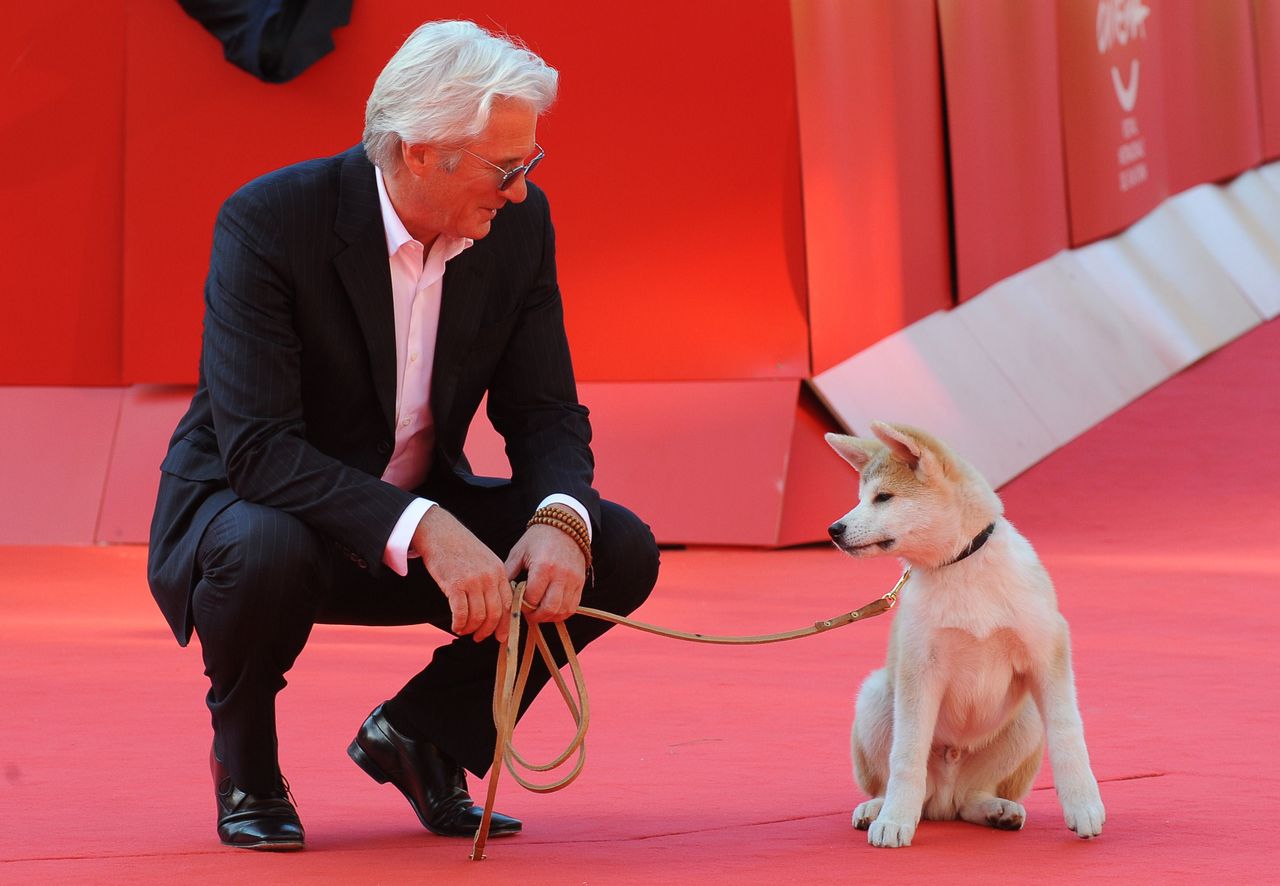
Screening of Hachi: A Dog’s Tale at the Rome Film Fest. Actor Richard Gere alongside the dog that portrayed Hachi on October 16, 2009. (© AFP Photo/Andreas Solaro; Jiji)
In the words of Saitō Hirokichi, who dedicated his life to the preservation of Japanese dog breeds, “If we interpret the account of Hachi, waiting at Shibuya Station until death, in human terms, it becomes a moving tale of honorable service, but I don’t believe we can attribute such a sense of obligation to Hachi. He simply had pure affection for the master who had treated him so fondly. Not only Hachi, but all dogs, are like this. It is unconditional and absolute love.”
Since the 1990s, a succession of high-rise buildings have been constructed around Shibuya Station. But amid the hustle and bustle of the metropolis, Hachi still peacefully awaits visitors to the station.
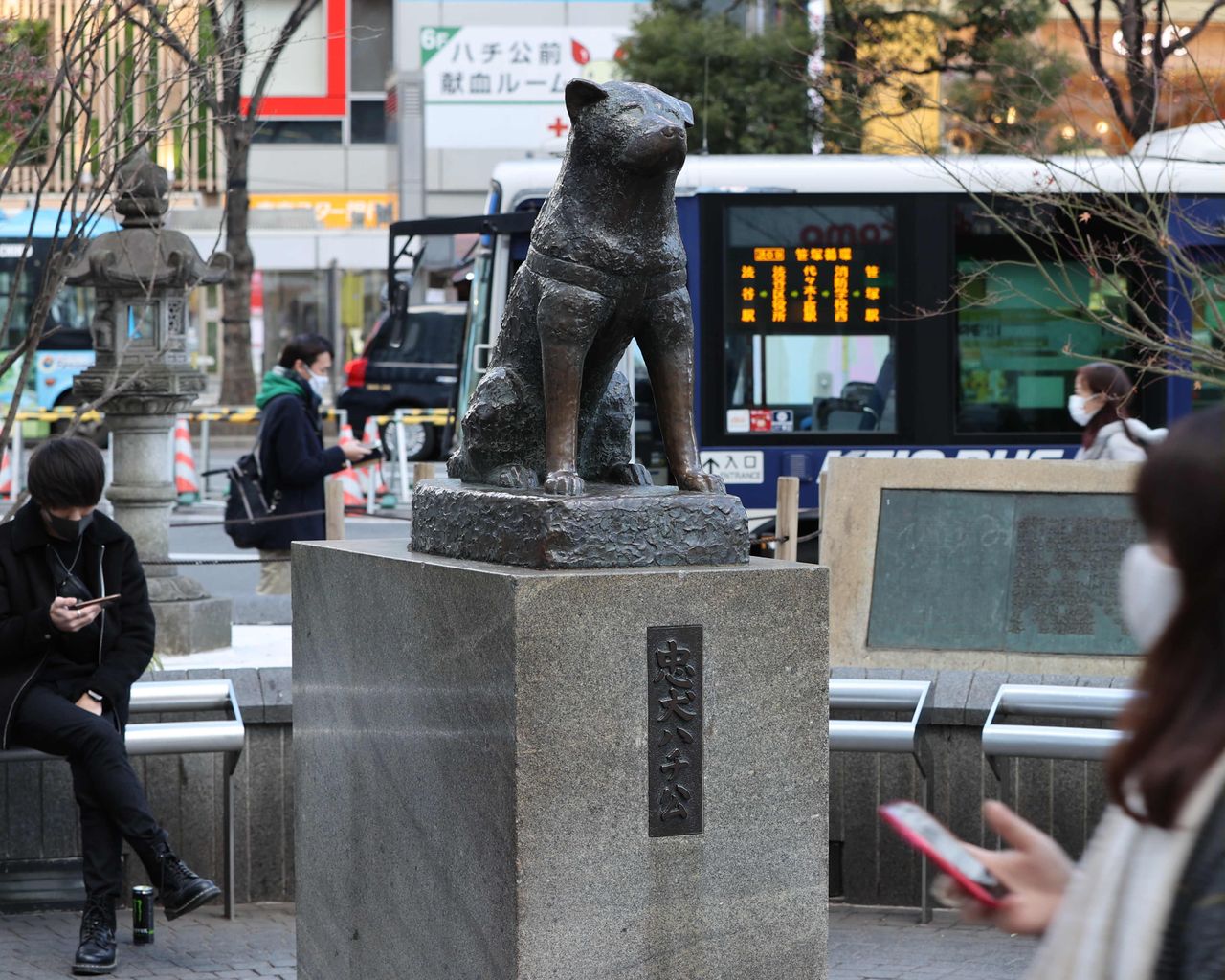
Hachikō’s statue in Shibuya, Tokyo. (© Jiji)
(Originally written in Japanese. Banner photo © Pixta.)